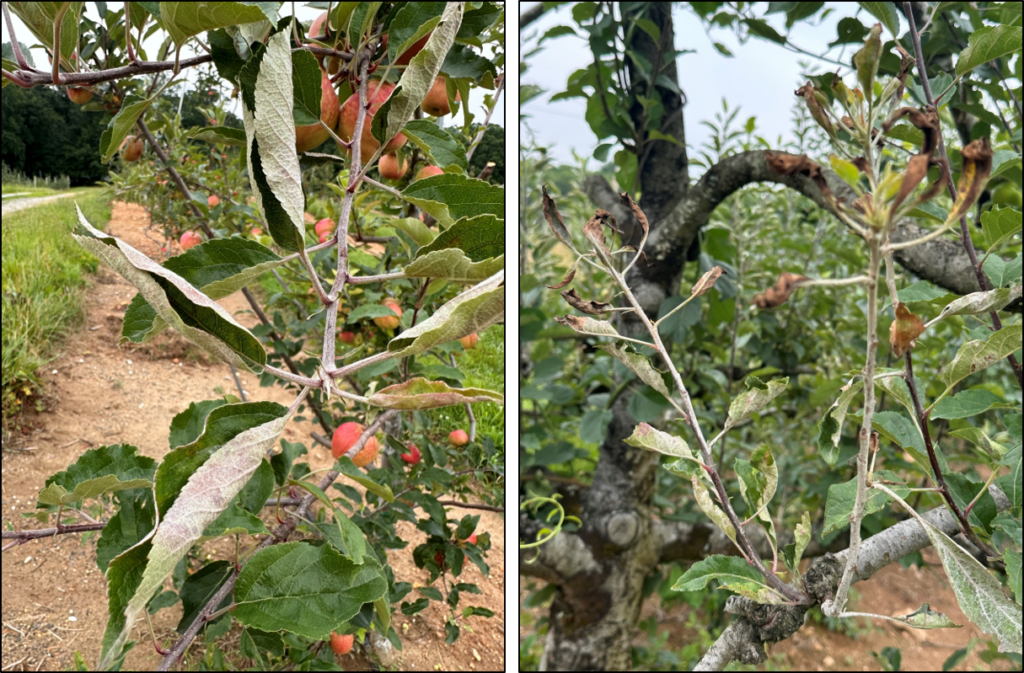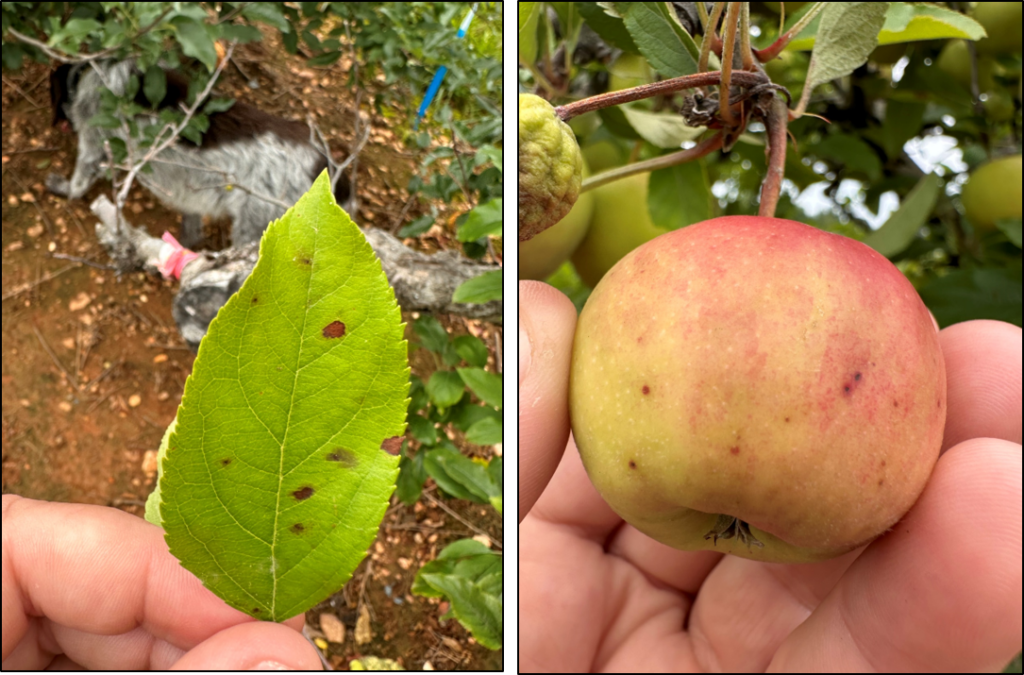Apple Disease Update: Week of July 3 2023
go.ncsu.edu/readext?944296
en Español / em Português
El inglés es el idioma de control de esta página. En la medida en que haya algún conflicto entre la traducción al inglés y la traducción, el inglés prevalece.
Al hacer clic en el enlace de traducción se activa un servicio de traducción gratuito para convertir la página al español. Al igual que con cualquier traducción por Internet, la conversión no es sensible al contexto y puede que no traduzca el texto en su significado original. NC State Extension no garantiza la exactitud del texto traducido. Por favor, tenga en cuenta que algunas aplicaciones y/o servicios pueden no funcionar como se espera cuando se traducen.
Português
Inglês é o idioma de controle desta página. Na medida que haja algum conflito entre o texto original em Inglês e a tradução, o Inglês prevalece.
Ao clicar no link de tradução, um serviço gratuito de tradução será ativado para converter a página para o Português. Como em qualquer tradução pela internet, a conversão não é sensivel ao contexto e pode não ocorrer a tradução para o significado orginal. O serviço de Extensão da Carolina do Norte (NC State Extension) não garante a exatidão do texto traduzido. Por favor, observe que algumas funções ou serviços podem não funcionar como esperado após a tradução.
English
English is the controlling language of this page. To the extent there is any conflict between the English text and the translation, English controls.
Clicking on the translation link activates a free translation service to convert the page to Spanish. As with any Internet translation, the conversion is not context-sensitive and may not translate the text to its original meaning. NC State Extension does not guarantee the accuracy of the translated text. Please note that some applications and/or services may not function as expected when translated.
Collapse ▲Rarely is powdery mildew designated as the “cover photo” for an apple portal post during the summer. However, the hot and humid weather over the past few weeks have led to a blow up of this disease. While the fungal pathogen causing powdery mildew does fare well when free water is available (i.e. the leaves or wet and/or it’s actively raining), humid, warm/hot, and overcast environments is where it thrives. Given the incidence and severity of primary mildew I’m currently seeing in western NC in cultivars such as ‘Honeycrisp’, ‘Rome Beauty’, ‘Gala’, and ‘Jonagold’, I have more concern than a normal year in regards to the impact of mildew from leaf infections as well as causing more russeting on already cold injured fruit. Furthermore, in my young high density research orchard, I observed new leaves beginning to emerge following the normal June “shut down” period. These leaves are especially susceptible to infection by powdery mildew. In young orchards, where leaf area and filling the canopy is important, infection of the terminal shoot ends can really slow down tree growth progress.
The ‘cover photo’ above was taken today in my ‘Rome Beauty’ research block at MHCREC. The majority of the shoots have leaves infected by the powdery mildew fungus. Symptoms include white spores or red leaf tissue on the leaf undersides, particularly along the margins, cupping or curling or leaves, and in the case of particularly severe infections, failure of the terminal shoot to elongate (see bottom right shoot). Directly below are close up photos of the white spores + reddening/curling (left) and shoot stunting (right):
So, in the heat of the summer what should you do for mildew? For one, please do not add sulfur to the tank-particularly when our temperatures are in the mid-80s and higher. Besides smelling and getting my asthma flared up, sulfur can cause phytotoxicity to fruit when applied at these higher temps. For second, DO NOT rely on captan or an ebdc to manage mildew-simply put, they really don’t work. Certainly captan should be included in nearly every tank mix during the summer months for bitter rot/GLS management, however you should consider adding a mildew specific fungicide to the tank every other spray to keep mildew under control-particularly in young blocks or in those with highly susceptible cultivars. Some options include:
- DMIs (FRAC 3): Rally, Procure, Topguard/Rhyme
- Strobilurins (FRAC 11): I would time these for bitter rot/GLS but they are also solid for mildew management: Merivon, Flint Extra. Luna Sensation
- SDHIs (FRAC 11): Luna fungicide product line, Sercadis, Aprovia
- Mildew specific fungicides: Gatten
Now with all this excitement about powdery mildew, please don’t ignore our arch nemesis: Glomerella leaf spot and bitter rot. On a stroll through our Glomerella research orchard today, no trees in which captan was applied on a 7 to 10 day interval had any symptoms of GLS or bitter rot. However, treatments in which captan was applied on a 14 day interval beginning at 1st cover were another story:
One could argue that I’m using a backpack sprayer and perhaps getting better coverage. However, on a 7-10 day fungicide application interval in Drs. Tom Kon and Mike Parker’s orchards at MHCREC where an airblast is being used, no symptoms of GLS have been observed to date.If you do have early symptoms of GLS in your orchards, I would not throw in the towel quite yet. Get out there tomorrow and get an application of Merivon + Captan on the trees and then get on that tightened interval. While it may be hard to keep the disease off of later harvest cultivars once moderate symptoms are observed, our research has shown that you should be able to save earlier harvesting cultivars like ‘Gala’.
In summary, if it were me I’d consider these fungicide options/scenarios for this fungicide round:
- If you have symptoms of GLS/bitter rot or haven’t gotten an application of Merivon or another stroby this year, apply it with captan (full rate of stroby + half rate captan)
- If all looks good, a half rate of captan should do the trick. If you are concerned about FSSB, add Topsin (thiophanate methyl) to the mix





